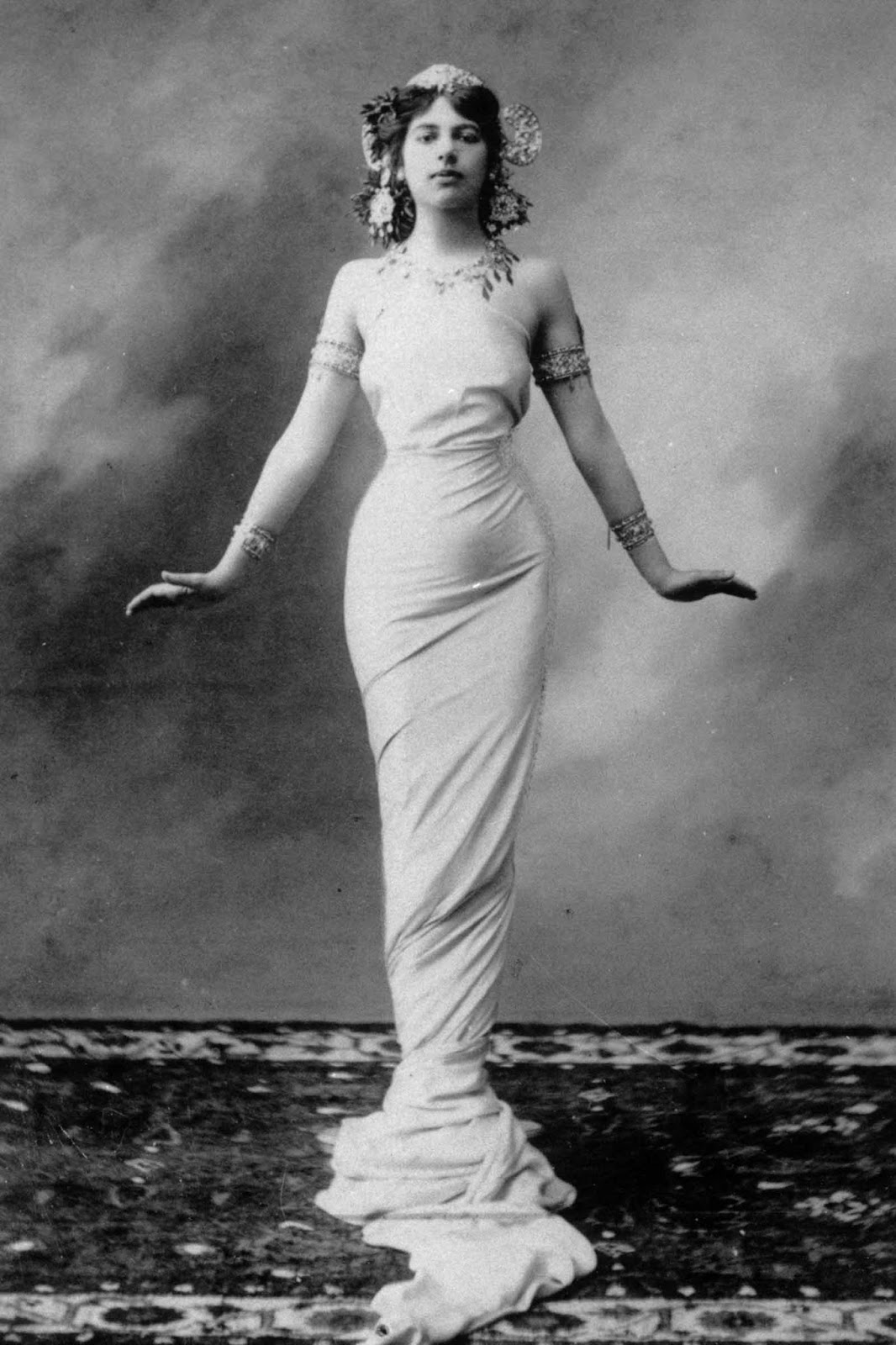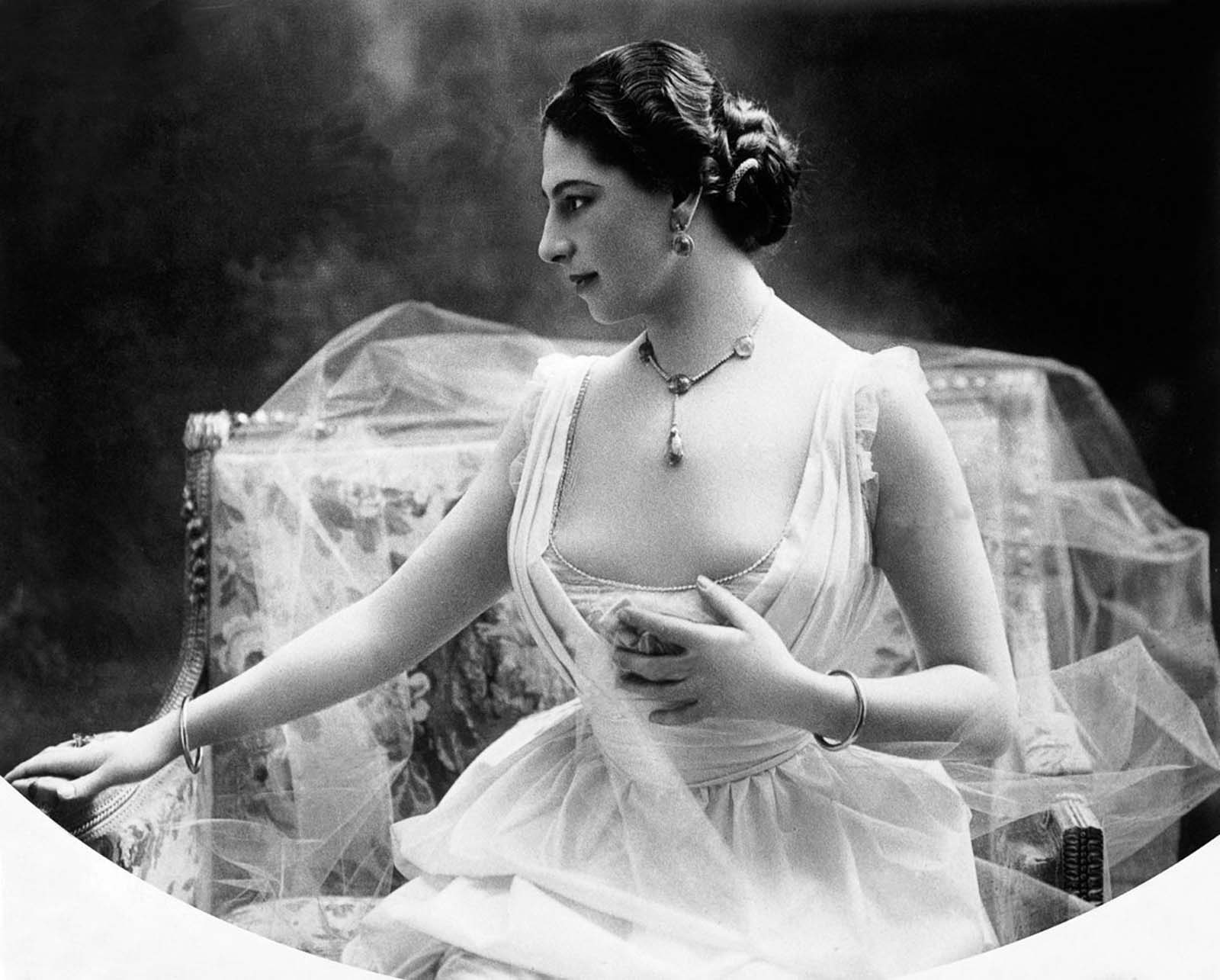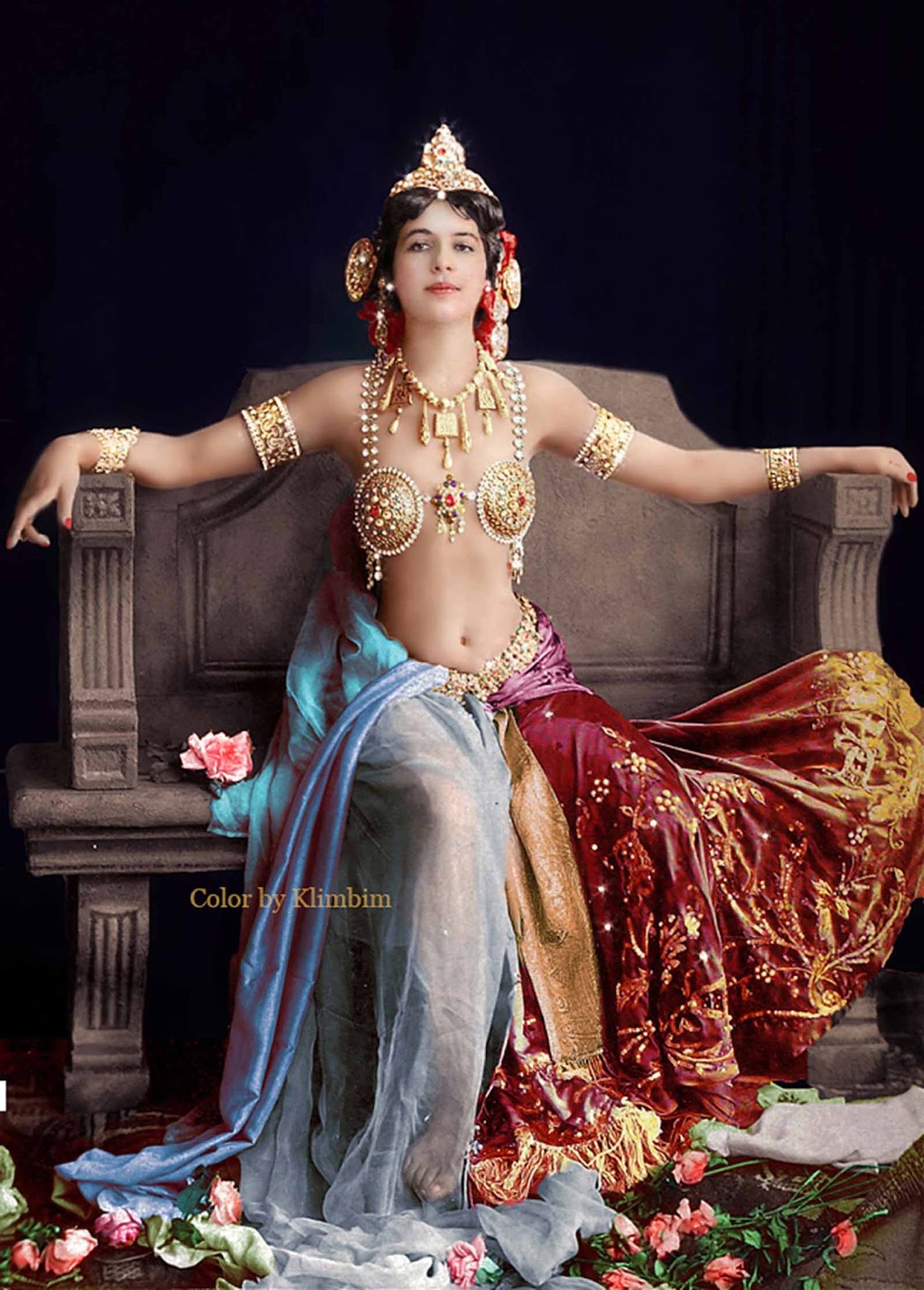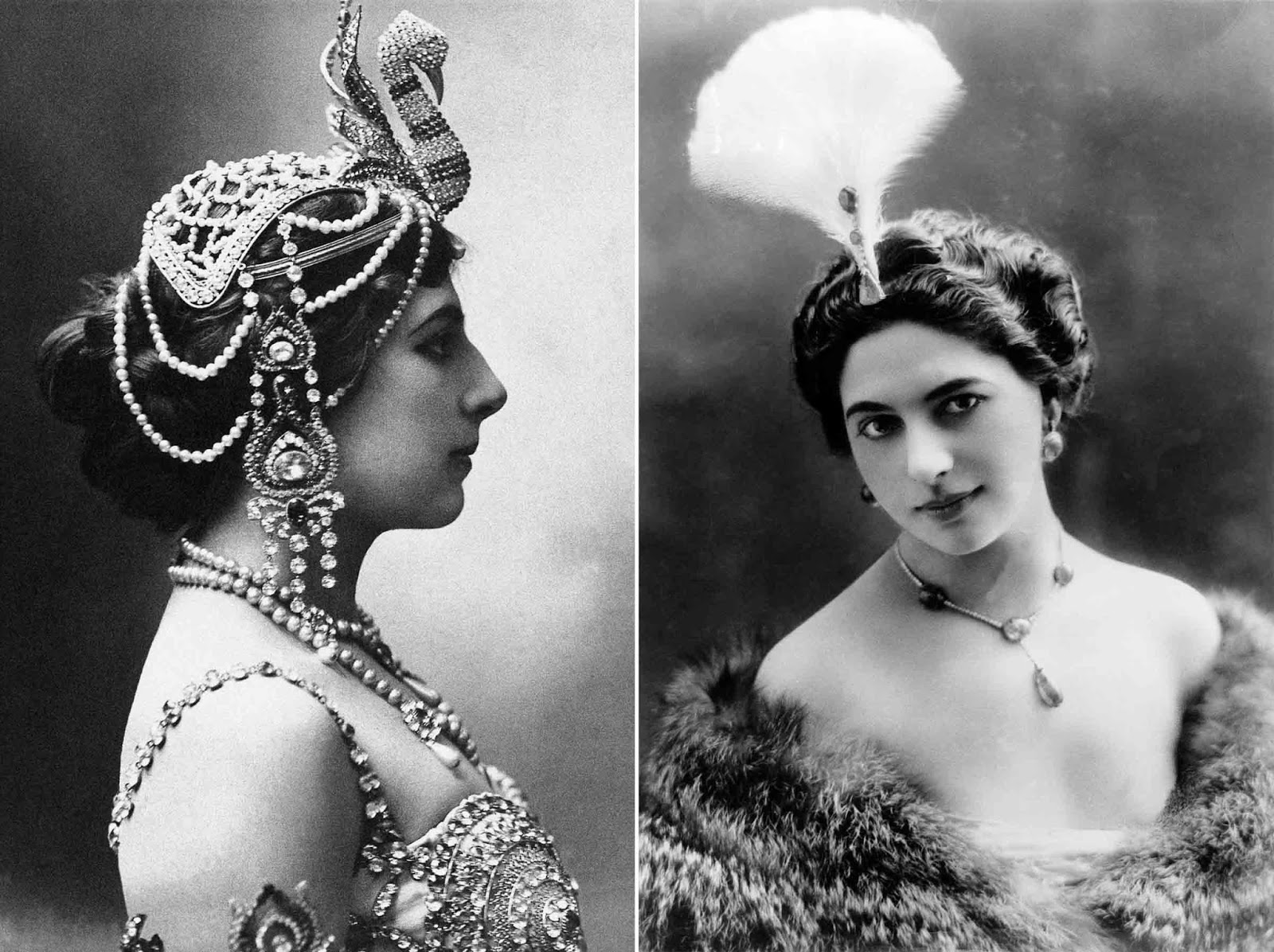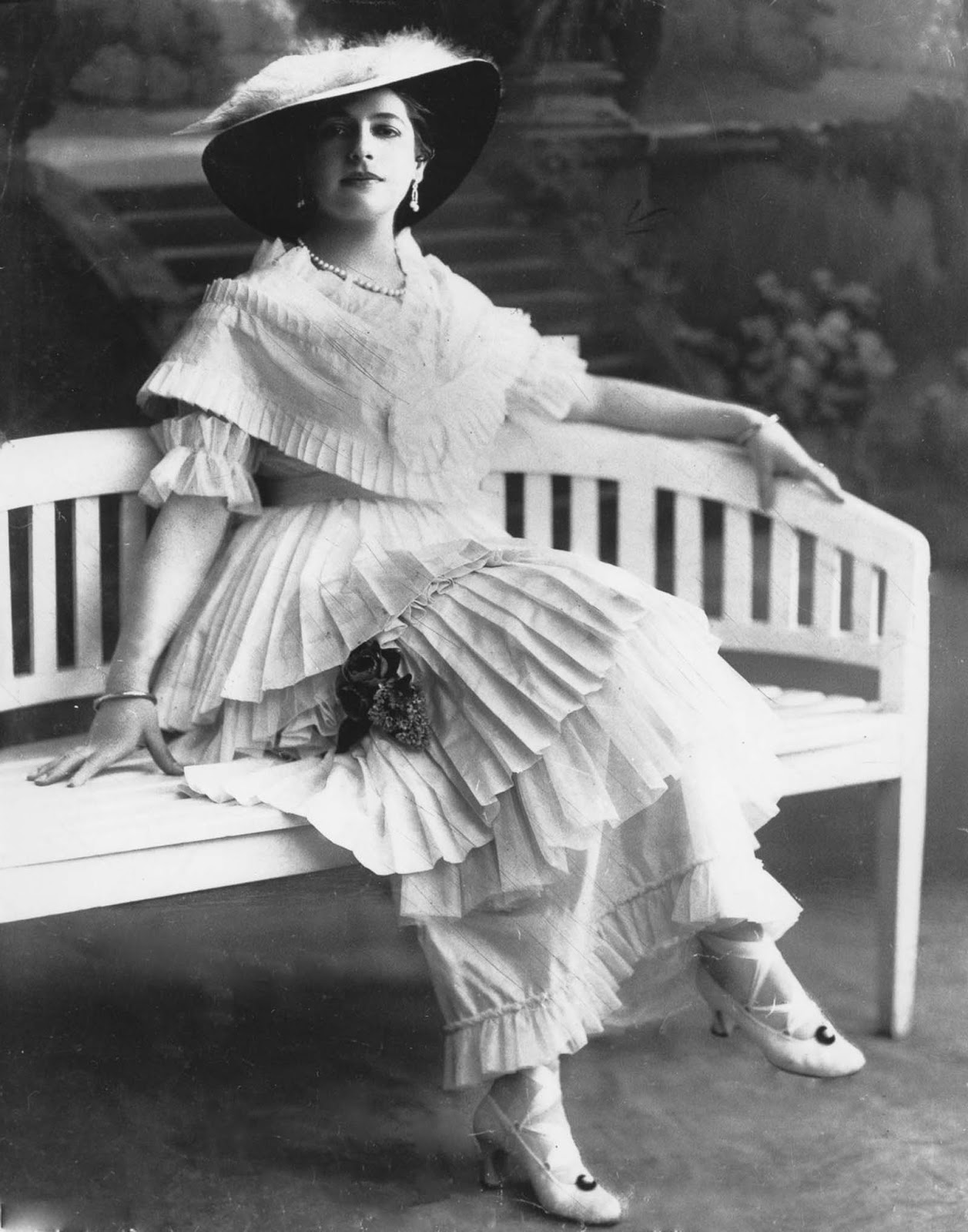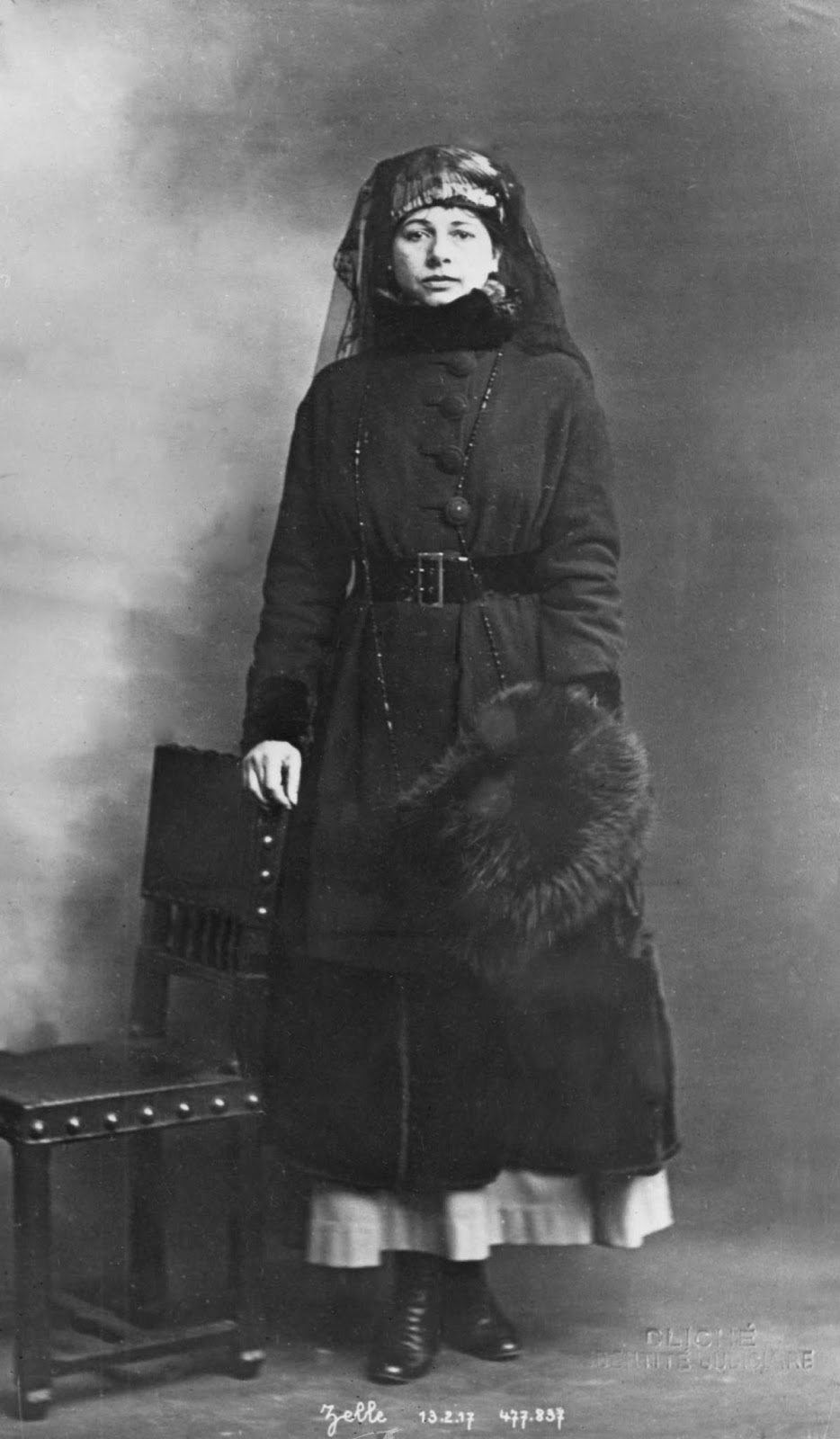She first came to Paris in 1905 and found fame as a performer of exotic Asian-inspired dances. She soon began touring all over Europe, telling the story of how she was born in a sacred Indian temple and taught ancient dances by a priestess who gave her the name Mata Hari, meaning “eye of the day” in Malay. In reality, Mata Hari was born in a small town in northern Holland in 1876, and her real name was Margaretha Geertruida Zelle. She acquired her superficial knowledge of Indian and Javanese dances when she lived for several years in Malaysia with her former husband, who was a Scot in the Dutch colonial army. Regardless of her authenticity, she packed dance halls and opera houses from Russia to France, mostly because her show consisted of her slowly stripping nude. Since most Europeans at the time were unfamiliar with the Dutch East Indies, Mata Hari was thought of as exotic, and it was assumed her claims were genuine. One evidently enthused French journalist wrote in a Paris newspaper that Mata Hari was “so feline, extremely feminine, majestically tragic, the thousand curves and movements of her body trembling in a thousand rhythms”. One journalist in Vienna wrote after seeing one of her performances that Mata Hari was “slender and tall with the flexible grace of a wild animal, and with blue-black hair” and that her face “makes a strange foreign impression”. Mata Hari’s career went into decline after 1912. On 13 March 1915, she performed in what would be the last show of her career. She had begun her career relatively late for a dancer and had started putting on weight. However, by this time she had become a successful courtesan, known more for her sensuality and eroticism than for her beauty. She had relationships with high-ranking military officers, politicians, and others in influential positions in many countries. After the outbreak of World War I her catalog of lovers began to include high-ranking military officers of various nationalities. In February 1917, French authorities arrested her for espionage and imprisoned her at St. Lazare Prison in Paris. In a military trial conducted in July, she was accused of revealing details of the Allies’ new weapon, the tank, resulting in the deaths of thousands of soldiers. She was convicted and sentenced to death, and on October 15 she refused a blindfold and was shot to death by a firing squad at Vincennes. Allegedly she blew a kiss to the firing squad before being shot. There is some evidence that Mata Hari acted as a German spy, and for a time as a double agent for the French, but the Germans had written her off as an ineffective agent whose pillow talk had produced little intelligence of value. Her military trial was riddled with bias and circumstantial evidence, and it is probable that French authorities trumped her up as “the greatest woman spy of the century” as a distraction for the huge losses the French army was suffering on the western front. Mata Hari has often been portrayed as a femme fatale, the dangerous, seductive woman who uses her sexuality to effortlessly manipulate men, but in reality, she was in the words of the American historians Norman Polmer and Thomas Allen “naïve and easily duped”, a victim of men rather than a victimizer. Her only real crimes may have been an elaborate stage fallacy and a weakness for men in uniform. (Photo credit: National Archives of France). Notify me of new posts by email.
Δ Subscribe
